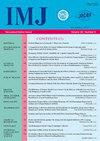METABOLISM FEATURES OF HAPTOGLOBIN AS INFLAMMATION ACUTE PHASE PROTEIN IN PATIENTS WITH CHRONIC HCV INFECTION
Q4 Medicine
引用次数: 0
Abstract
Modern advances in hepatology are characterized by the introduction into practice of interferon−free therapy of chronic hepatitis C, as well as the expansion of the arsenal of methods for non−invasive or minimally invasive diagnosis of morphological changes in the liver. The ineffectiveness of therapy is stipulated by, in particular, the amino acid polymorphism of viral proteins, which determines the resistance of certain variants of HCV to directly acting antiviral drugs. In order to assess the content of haptoglobin in the serum of patients with chronic hepatitis C depending on the activity of cytolytic enzymes in the serum, the degree of inflammatory−necrotic activity of the process, stage of liver fibrosis, virus genotype, viral load, age and sex of patients, prior to, on the background and after antiviral therapy, 215 patients were examined. The results showed that in most patients the content of haptoglobin in the serum was within normal limits. It correlated with the degree of inflammatory−necrotic activity of hepatitis, the stage of liver fibrosis and did not depend on the biochemical activity of the process, virus genotype, viral load, age and sex of the patient. Determining the content of this protein in the serum before the start of combination antiviral therapy, provided that other factors, leading to hypogaptoglobinemia, with a high probability allowed to diagnose severe fibrosis (cirrhosis) of the liver or its absence, and to predict the absence of its effect. On the background of a combined antiviral therapy with ribavirin, there was a decrease in serum haptoglobin, enabling the use of this index to monitor the activity of drug hemolysis and was a reason not to recommend assessment of liver fibrosis by FibroTest during and after treatment, if its protocol included "antiviral Ribavirin". Key words: HCV infection, morphological changes in liver, liver biopsy, non−invasive diagnosis of fibrosis, antiviral therapy, predictors for treatment outcome, haptoglobin.慢性丙型肝炎病毒感染患者炎症急性期蛋白的代谢特征
肝病学的现代进步的特点是引入无干扰素治疗慢性丙型肝炎的实践,以及对肝脏形态变化的非侵入性或微创诊断方法的扩展。治疗的无效是由病毒蛋白的氨基酸多态性决定的,这决定了某些HCV变体对直接作用的抗病毒药物的耐药性。为了评估慢性丙型肝炎患者血清中接触红蛋白的含量,根据血清中细胞溶解酶的活性,过程中的炎症-坏死活性程度,肝纤维化阶段,病毒基因型,病毒载量,患者的年龄和性别,在抗病毒治疗之前,背景和之后,215例患者进行了检查。结果显示,大多数患者血清中触珠蛋白含量在正常范围内。它与肝炎的炎症-坏死活性程度、肝纤维化分期相关,而不依赖于该过程的生化活性、病毒基因型、病毒载量、患者的年龄和性别。在联合抗病毒治疗开始前测定血清中该蛋白的含量,如果其他因素导致低球蛋白血症,高概率可以诊断肝脏严重纤维化(肝硬化)或其不存在,并预测其不存在的影响。在与利巴韦林联合抗病毒治疗的背景下,血清接触珠蛋白下降,使该指标能够用于监测药物溶血活性,这是不推荐在治疗期间和治疗后使用FibroTest评估肝纤维化的原因,如果其方案包括“抗病毒利巴韦林”。关键词:HCV感染,肝脏形态学改变,肝活检,无创纤维化诊断,抗病毒治疗,治疗结果预测因子,触珠蛋白。
本文章由计算机程序翻译,如有差异,请以英文原文为准。
求助全文
约1分钟内获得全文
求助全文
来源期刊

International Medical Journal
医学-医学:内科
自引率
0.00%
发文量
21
审稿时长
4-8 weeks
期刊介绍:
The International Medical Journal is intended to provide a multidisciplinary forum for the exchange of ideas and information among professionals concerned with medicine and related disciplines in the world. It is recognized that many other disciplines have an important contribution to make in furthering knowledge of the physical life and mental life and the Editors welcome relevant contributions from them.
The Editors and Publishers wish to encourage a dialogue among the experts from different countries whose diverse cultures afford interesting and challenging alternatives to existing theories and practices. Priority will therefore be given to articles which are oriented to an international perspective. The journal will publish reviews of high quality on contemporary issues, significant clinical studies, and conceptual contributions, as well as serve in the rapid dissemination of important and relevant research findings.
The International Medical Journal (IMJ) was first established in 1994.
 求助内容:
求助内容: 应助结果提醒方式:
应助结果提醒方式:


